Animals
What to Do If Your Animal Has Been Poisoned: A Step-by-Step Guide
Take immediate action if your pet has been poisoned – quick response is key to their well-being and recovery.
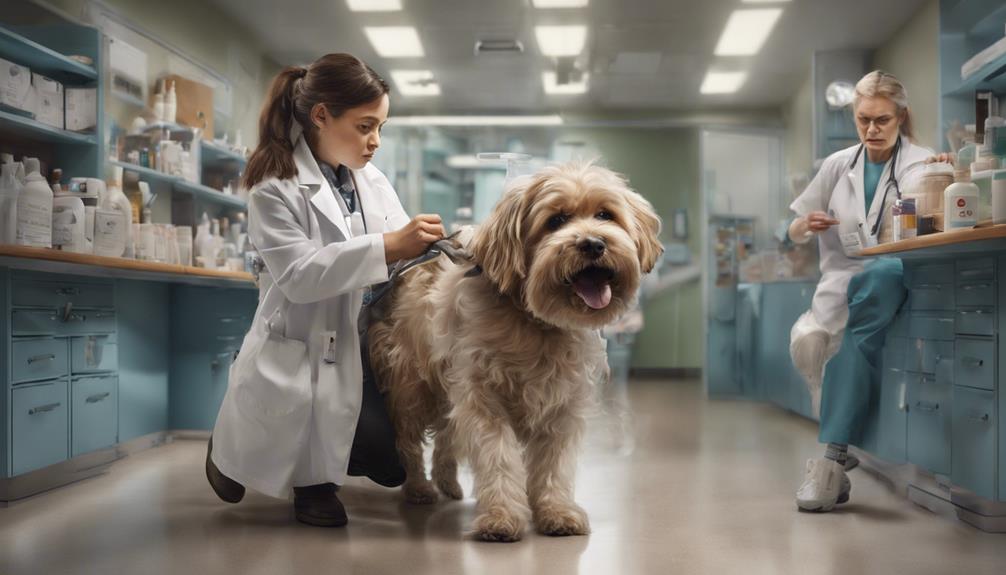
If your animal has been poisoned, it's essential to act quickly for their well-being. Start by identifying the poison by checking for visible clues or signs of exposure. Remove your pet from the source of poisoning and contact a vet immediately. Provide details on the poison type and symptoms to assist in treatment.
Monitor your pet's signs, and remember to secure toxic substances to prevent future incidents. Taking swift and precise action in such situations is critical for your pet's recovery and safety.
Key Takeaways
- Remove the pet from the poison source immediately.
- Contact a veterinarian or poison control hotline promptly for guidance.
- Avoid inducing vomiting without professional advice.
- Provide detailed information to the vet about the poison and symptoms.
- Monitor vital signs and seek professional veterinary care promptly.
Identifying the Poison
To properly identify the poison in cases of animal poisoning, we must meticulously examine the surroundings for any visible clues such as open containers, spilled substances, or missing items. It's essential to take into account the presence of poisonous plants in the vicinity, as they could be a potential source of toxicity. Additionally, if there are signs of skin exposure to certain substances, it might offer valuable insight into the type of poison involved.
In a veterinary practice or emergency service setting, where time is of the essence, swift action is paramount. Checking for labels and packaging of potential toxins can help determine the nature of the poison, aiding in prompt diagnosis and treatment. Observing any changes in the animal's behavior or symptoms post-exposure is also crucial in narrowing down the possible sources of poisoning.
Seeking immediate veterinary advice is indispensable in accurately identifying the poison and providing appropriate treatment tailored to the animal's condition. By being meticulous and thorough in our examination of the surroundings and taking all possible factors into account, we can effectively pinpoint the poison and take the necessary steps to guarantee the animal's well-being.
Immediate Actions to Take

After identifying the poison and evaluating the situation, the immediate actions to take in cases of animal poisoning involve:
- Removing the pet from the source of poisoning
- Contacting a veterinarian or animal poison control hotline promptly
- Refraining from inducing vomiting unless advised by a professional
It's important to act swiftly but calmly in such situations. Poisons that can harm animals include common household items like chocolate, certain plants, medications, and chemicals.
Once the pet is safely away from the toxin, contact a veterinarian or poison control hotline for specific guidance tailored to your pet's situation. Providing details about the poisoning incident, such as the type of toxin if known, will assist the professionals in offering the best advice. Remember not to try inducing vomiting without proper guidance, as this can sometimes do more harm than good.
Safely transporting your pet to the vet for assessment and treatment is crucial for their well-being.
Contacting a Veterinarian
Upon suspecting that your animal has been poisoned, contacting your veterinarian immediately is essential for receiving timely professional guidance.
When reaching out to your vet, provide essential details such as the type of poison, the amount ingested, and any observed symptoms. This information allows the veterinarian to assess the situation accurately and recommend appropriate steps.
Be prepared to follow the veterinarian's instructions diligently, which may involve bringing the poisoned animal in for examination and treatment. Inform the vet about any first aid measures you've already taken before seeking professional help.
Prompt and clear communication with the veterinarian is critical to guarantee the best possible outcome for your poisoned animal. Remember, the more precise information you can provide about the poisoning incident, the better equipped your veterinarian will be to assist your beloved pet.
Treatment and Recovery

When moving from contacting a veterinarian to discussing treatment and recovery for a poisoned animal, close monitoring of essential signs and symptoms becomes vital in guiding the course of action for excellent care.
Here are some key steps to ponder during the treatment and recovery process:
- Monitor Essential Signs: Keeping a close eye on your poisoned pet's essential signs, such as heart rate, respiratory rate, and temperature, can help gauge their progress and inform the treatment plan.
- Provide Professional Care: Seek expert veterinary care promptly to guarantee your pet receives the necessary medical attention, which may include supportive care like IV fluids and medications to aid in the recovery process.
- Follow-Up with Veterinarian: Schedule follow-up appointments with the veterinarian to track your pet's recovery progress, make any necessary adjustments to the treatment plan, and ensure they're on the right path to full recovery.
Preventing Future Poisoning Incidents
To prevent future poisoning incidents, securing all toxic substances in inaccessible locations is essential to safeguard pets from accidental ingestion. Utilizing childproof locks on cabinets containing cleaning products, medications, and other potential toxins can further prevent pets from accessing harmful substances.
It's important to keep all houseplants that are toxic to animals out of reach or replace them with pet-safe alternatives to minimize the risk of poisoning. Regularly inspecting your home and yard for any potential hazards that could be poisonous to animals is a proactive measure in maintaining their safety.
Educating yourself and your family members on the common household items that can be toxic to pets is crucial in preventing future poisoning incidents. Understanding the dangers associated with certain substances can help create a safer environment for your beloved animals.
Frequently Asked Questions
What to Do if an Animal Is Poisoned?
If an animal is poisoned, we must act quickly. Move them away from the toxin, contact a vet or poison control, and provide details on the incident.
Never induce vomiting or offer food/water without professional advice. Transport the pet to the vet for proper care.
Time is vital in these situations, so swift action can save a life.
What Should You Do After Being Poisoned?
After being poisoned, we must seek immediate help. Call emergency services or poison control for guidance.
Don't delay, as prompt action can save lives. Stay calm and provide details for accurate assistance. Follow their instructions closely to guarantee the best outcome.
How Do You if Your Dog Has Been Poisoned?
If your dog has been poisoned, it's important to look for signs like vomiting, diarrhea, drooling, tremors, or seizures. Keep track of potential toxins they may have encountered, such as plants, foods, medications, or chemicals.
Contact a vet immediately for guidance and treatment options. Avoid inducing vomiting without professional advice to prevent complications. Safely take your dog to the vet for prompt evaluation and care in case of suspected poisoning.
Does Milk Help a Poisoned Dog?
No, milk doesn't help a poisoned dog. It's important to understand that giving milk to a poisoned dog can worsen the situation rather than provide relief.
This action may not effectively counteract the toxic substance and could potentially induce vomiting, further dehydrating the dog.
To guarantee the best outcome for your pet, seek immediate veterinary care and follow professional guidance. Trusting milk as a remedy for poisoning isn't recommended and could be harmful in certain cases.
Is the Step-by-Step Guide for Poisoned Animals Applicable to Insects as Well?
The step-by-step guide for poisoned animals may not be directly applicable to insects, especially concerning bugs and fall damage. Insects have different anatomies and behaviors that may require specialized treatment. It’s important to consult experts or literature specifically addressing insect poisoning to ensure accurate and effective care.
Conclusion
To wrap up, it's crucial to act swiftly and decisively if your beloved pet has been poisoned. By following the steps outlined in this guide, you can guarantee that your furry friend receives the necessary care and treatment.
Remember, time is of the essence in these situations, so don't hesitate to reach out for help. By being proactive and informed, you can assist your pet in recovering and prevent any future mishaps.
Remember, an ounce of prevention is worth a pound of cure.
As our Editor-in-Chief, James plays a pivotal role in ensuring the quality and integrity of our content. With a keen eye for detail and a passion for storytelling, James oversees the editorial process here at A Place for Animals. With years of experience in content editing, James ensures that every piece of content meets our high standards of accuracy and clarity. Under James’ guidance, you can rest assured that the content you read is informative and impeccably crafted.

Animals
Differences Between Cows and Goats
Discover the key distinctions between cows and goats, from size and appearance to milk production and dietary preferences, in this insightful comparison.
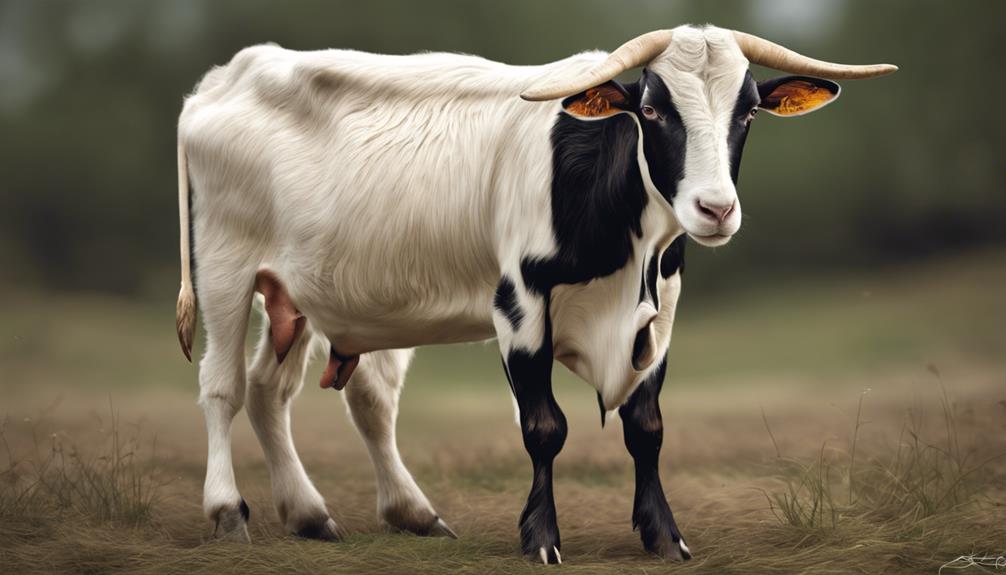
Cows are big, up to 1,500 pounds, with broad bodies and large udders. Goats are smaller, around 100-200 pounds, with slim builds and small udders. Cows have longer, wider horns; goats may or may not have any. Goats sport long ears and a beard, unlike cows. Their milk differs in quantity and quality. Cows produce more milk but fat content varies. Both provide meat and milk, each with unique flavors and nutrients. Goats prefer different plants than cows, needing less food. Understanding these differences will help you make decisions about farming or caring for these animals.
Key Takeaways
- Cows are larger, weighing up to 1,500 pounds, while goats are smaller, weighing around 100-200 pounds.
- Cows generally produce more milk than goats, with different fat content and cream separator use.
- Cows provide beef and milk, while goats offer chevon and milk, each with unique nutritional profiles.
- Cows graze on grasses, while goats prefer woodier plants, requiring tailored feeding strategies for optimal health.
- Goats are curious and agile, while cows are more predictable and easier to handle, impacting care needs and handling.
Size and Physical Characteristics
When comparing cows and goats, one can immediately notice the stark differences in size and physical characteristics.
Cows are hefty animals, tipping the scales at up to 1,500 pounds, while goats are daintier, usually weighing around 100-200 pounds.
Regarding physical build, cows boast a sturdy frame with a broad body and large udders, whereas goats flaunt a slender physique with more petite udders. Horns also play a role in distinguishing the two; cows sport longer and broader horns, while goats may or may not have horns, depending on their breed.
Additionally, goats exude agility and nimbleness, sporting distinctive features like elongated ears and a beard, contrasting with the more placid and robust appearance of cows.
These variations in size and physical attributes impact how farmers handle, house, and feed these animals on the farm.
Milk Production and Quality
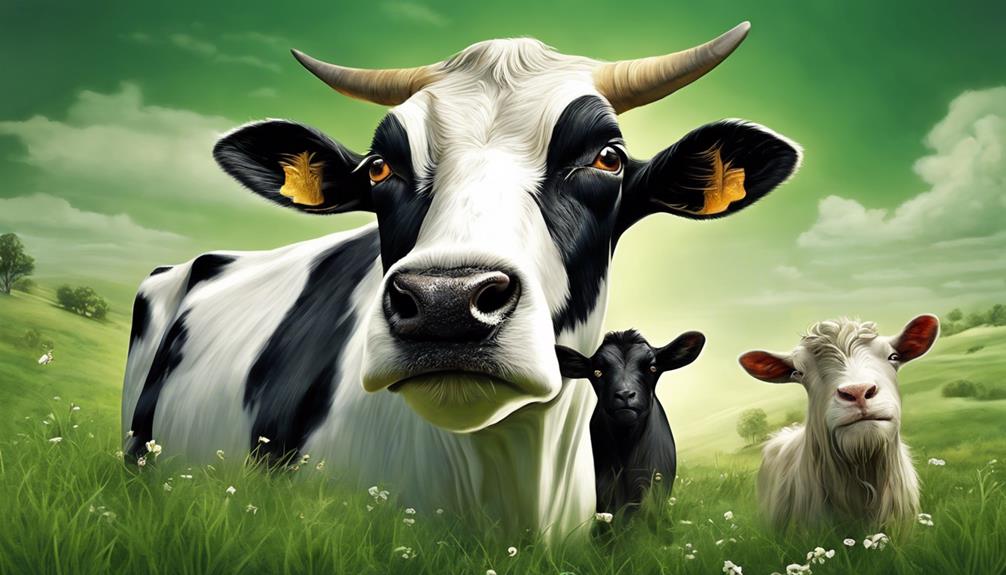
When comparing cows and goats for milk production, it's crucial to recognize that cows generally produce more milk than goats do.
Additionally, the fat content in milk from cows can differ from that of goats, impacting the taste and texture of the final product.
Understanding these differences can help in making informed decisions when it comes to choosing between cow and goat milk for consumption.
Milk Quantity Differences
Cows outperform goats in milk production, making them a preferred choice for those seeking larger quantities of milk. While goats are smaller and easier to handle, they can't match the milk output of a Jersey cow.
The use of a cream separator can help extract cream from cow's milk, but this is less common with goat milk due to lower fat content. Goat milk tastes can vary based on factors like the presence of a buck with does, hygiene during milking, and the animals' diet.
Understanding the milk production capacity of the animal or its dam is crucial before making a purchase decision. For those looking to yield substantial amounts of milk, cows are the way to go.
Milk Fat Content
Spotting differences between cows and goats extends to their milk fat content, impacting both production and quality. Nigerian Dwarf Goats offer milk with 6-10% fat, resulting in a rich and creamy texture suitable for various dairy products.
In contrast, Jersey cows typically provide milk with around 5% butterfat, offering a well-balanced richness. Saanen goats produce milk with approximately 3.5% milk fat content, ideal for different dairy items.
An interesting fact is that goat milk is naturally homogenized, unlike cow's milk, which can separate over time. If you leave cow's milk undisturbed, the cream rises to the top.
Understanding these differences in milk fat content between cows and goats can help in choosing the right type of milk for specific dairy needs.
Meat and Dairy Products
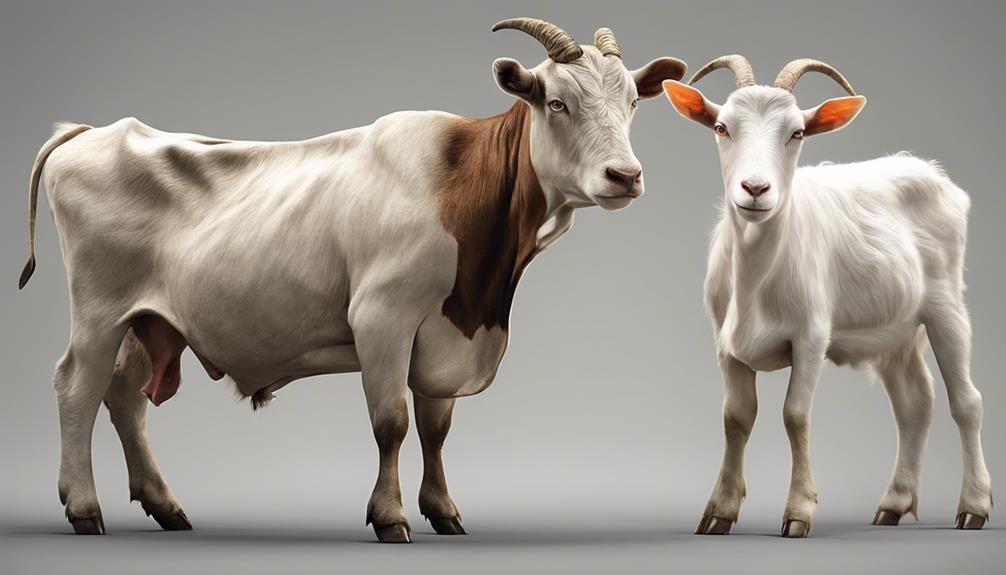
When it comes to meat and dairy products, cows provide beef and milk, while goats offer chevon and milk.
These two animals have distinct nutritional differences in the products they produce. Understanding these variations can help in making informed choices about what to consume.
Cows: Beef, Milk
Raising cows for beef and milk production is a common practice in agriculture. Cows provide essential products like beef and milk which are widely consumed. Cows are known for their high milk yield, making them valuable for dairy products such as milk, cheese, cream, butter, and yogurt.
Compared to goats, cows require more land for grazing and maintenance, typically about 2-3 acres per cow. This land requirement is essential to guarantee the cows have enough space to graze and roam freely. The beef from cows is a popular meat source globally, highlighting the significance of cows in providing both meat and dairy products for various purposes.
Goats: Chevon, Milk
In the domain of animal husbandry, goats stand out as versatile creatures that offer both chevon, a lean meat alternative, and nutrient-rich milk for consumption.
| Goat Breeds | Milk |
|---|---|
| Saanen | High in nutrients |
| Nubian | Creamy and flavorful |
| LaMancha | Naturally homogenized |
Goat milk, known for being easier to digest than cow's milk, is rich in nutrients like calcium and vitamins A and D. Goats, being dual-purpose animals, provide both meat (chevon) and dairy products. The milk from goats is often preferred by individuals with lactose intolerance due to its lower lactose content.
Nutritional Differences
As we shift our focus to the nutritional disparities between goat and cow meat and dairy products, it becomes evident that these differences play a significant role in dietary choices. Here are some key points to take into account:
- Goat meat is lower in fat and cholesterol compared to cow meat.
- Cow meat tends to be richer in flavor and juicier than goat meat.
- Goat milk is naturally homogenized, while cow milk is not.
- Cow milk contains more casein protein compared to goat milk.
- Goat milk is higher in calcium and vitamin A than cow milk.
These distinctions highlight the varying nutritional profiles of goat and cow products, offering consumers a range of options to suit their dietary preferences and health needs.
Feeding and Nutritional Needs

When considering the feeding and nutritional needs of cows and goats, it's essential to understand their distinct dietary preferences and requirements.
Cows, as grazers, have a penchant for grasses and forbs, while goats lean towards woodier plants and are adept at clearing brush. Due to their larger size and higher energy needs, cows necessitate larger feed quantities compared to goats.
Conversely, goats thrive on social interaction within herd dynamics, showcasing their efficiency in feed utilization despite their smaller size. Understanding these differences allows for tailored feeding strategies, ensuring peak health and productivity for both species.
It's fascinating how these nuances in dietary preferences and herd dynamics contribute to the varied milk production and overall well-being of cows and goats. By catering to their unique feeding habits and nutritional needs, one can harness the full potential of these animals in farming practices.
Behavior and Temperament
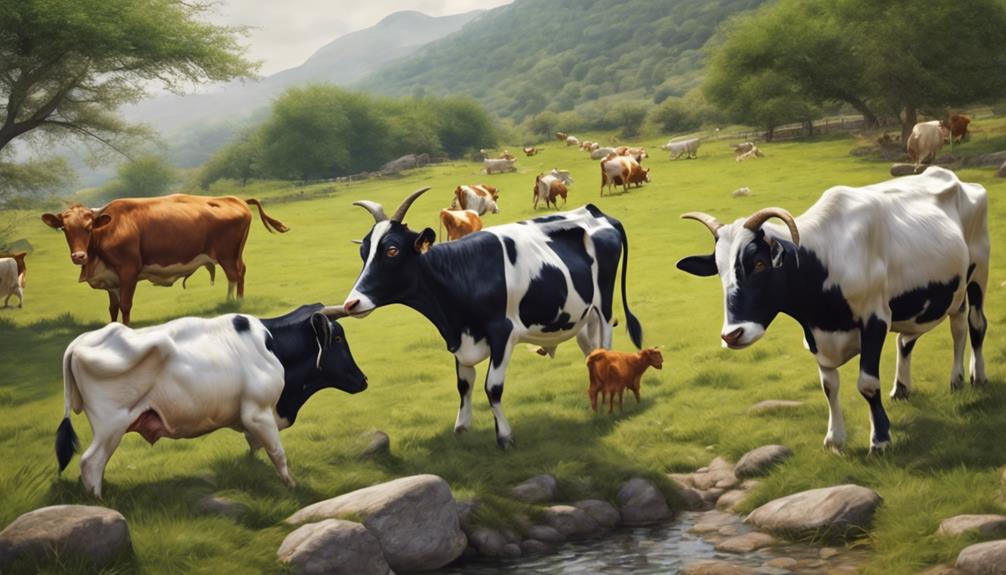
Cows and goats display distinct behavioral traits that highlight their unique temperaments and interactions within a farming environment. When it comes to behavior and temperament:
- Milking: Cows are often more accustomed to milking routines and handling, making the process smoother compared to goats.
- Escape: Goats are notorious for their curiosity and agility, making them more likely to attempt escaping enclosures than cows.
- Companionship: While cows can thrive independently, goats require companionship and do better when kept in pairs or groups for their well-being.
- Predictable: Cows are generally more predictable in their behavior, making them easier to handle and work with in a farming setting.
- Handling: Due to their docile nature, cows are typically easier to handle and manage compared to the more independent and sometimes stubborn goats.
Understanding these differences in behavior and temperament is essential for effective farming practices and ensuring the well-being of both cows and goats.
Space and Housing Requirements

To effectively house both cows and goats, it's important to take into account their specific space requirements and housing needs.
While cows typically need 2-3 acres of land for grazing and housing, goats require considerably smaller areas, around 200-400 square feet per goat.
When it comes to housing, cows need sturdy fencing and a shelter to shield them from the elements, while goats, being more agile, may need secure fencing to prevent escapes. Proper ventilation is essential for both cow and goat housing to prevent respiratory issues.
Designing spaces for cows and goats that meet these requirements ensures their well-being and safety. Cows thrive in open areas with ample grazing land, whereas goats can adapt to smaller spaces more easily.
Understanding and meeting the space and housing needs of cows and goats are key steps in providing a suitable environment for these animals to live healthy and happy lives.
Health and Veterinary Care

Regular veterinary care plays an essential role in maintaining the health and well-being of both cows and goats. When it comes to ensuring the best possible health of these animals, there are key differences to take into account:
- Cows require specific vaccinations to protect against common diseases.
- Goats need more frequent deworming due to their susceptibility to internal parasites.
Routine health checks are critical for both cows and goats to detect any health issues early on.
- Hoof trimming is necessary for maintaining the mobility and comfort of both cows and goats.
Understanding the distinct health needs and prevalent diseases of cows and goats is crucial for effective veterinary care.
Breeding and Reproduction
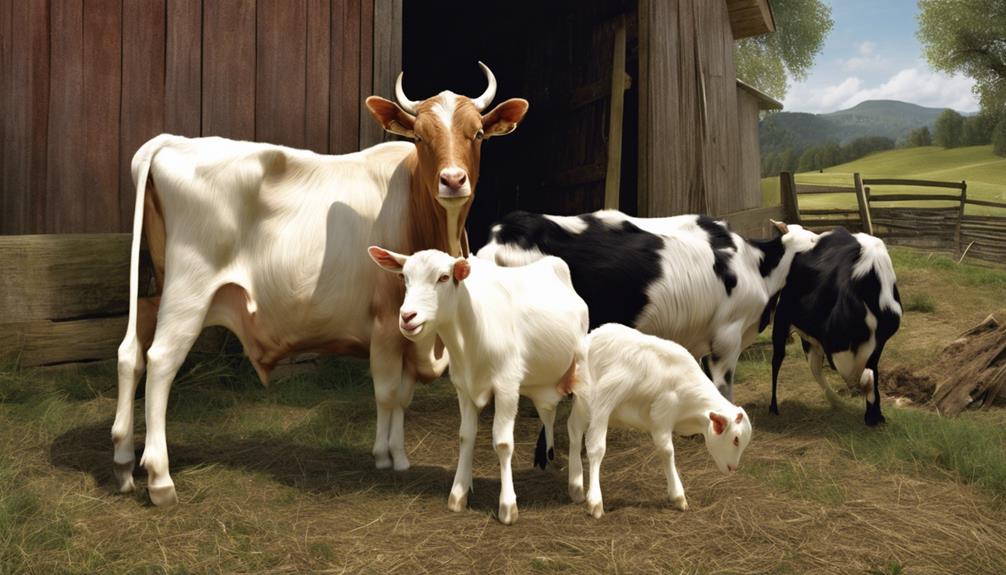
Breeding and reproduction play an essential role in the management of dairy animals, ensuring the continuity of healthy offspring and maximum milk production. When it comes to breeding animals, cows require the assistance of bulls, while goats need bucks for successful reproduction. Bucks and bulls are pivotal in the reproductive cycle, influencing the quality and quantity of milk produced by these animals.
Selecting the right breeding animals is key to guaranteeing healthy offspring and peak milk production levels. To maintain sustainable management practices, it's crucial to understand the intricacies of the breeding process in both cows and goats. By carefully managing the reproductive cycles of these animals, dairy farmers can guarantee the long-term success of their herds and the quality of the milk they produce.
Effective breeding practices not only contribute to the health and well-being of the animals but also play a significant role in the overall profitability of dairy farming operations.
Economic Considerations and Profitability

Considering the economic aspects of dairy farming, the profitability of choosing between cows and goats hinges on understanding their differing cost structures. When it comes to small-scale milk production, goats often prove to be more cost-effective due to their lower initial costs and maintenance expenses. Here are some key points to take into account for maximizing profitability:
- Lower Initial Costs: Goats generally require less investment upfront, making them a more accessible option for those starting in the dairy farming business.
- Easier to Keep: Goats are known for their adaptability and are generally easier to manage compared to cows, reducing the labor and resources needed for their upkeep.
- Maintenance Expenses: Cows tend to have higher ongoing costs related to feed and space requirements, which can impact the overall profitability of the operation.
- Financial Implications: Understanding the financial aspects of choosing between cows and goats is essential for making informed decisions that will positively impact the bottom line.
- Profitability: By carefully weighing the costs and benefits of each option, farmers can optimize their operations for maximum profitability in the dairy industry.
Frequently Asked Questions
What Are 2 Differences Between Goat's Milk and Cow's Milk?
When comparing goat's milk and cow's milk, two key differences are the fat content and lactose levels. Goat's milk has higher fat content, while cow's milk typically contains more lactose. These variations contribute to each milk's unique characteristics.
Are Goats Easier Than Cows?
Handling and milking goats is easier than cows. They are smaller, friendlier, and require less initial investment. Goats offer a more manageable and cost-effective option for beginners. Their simplicity and size make them a better choice.
Is It Easier to Milk a Cow or Goat?
Milking a goat feels like dancing in a gentle breeze, a harmonious symphony of udders and hands. It's an art form, a delicate balance of skill and connection. The simplicity and grace make it a joyous task.
What Are the Pros and Cons of Goats?
Managing goats presents several advantages. They are versatile, requiring minimal space. Their products vary from meat to wool. Goats' size makes them easy to handle. They are safe and less intimidating than cows, making them a practical choice.
Conclusion
To sum up, while cows and goats have many similarities, such as being domesticated farm animals used for milk and meat production, there are also key differences to take into account.
One common objection may be that cows are larger and require more space and resources than goats. However, it's important to remember that both animals have unique qualities and characteristics that make them valuable assets to any farm operation.
Understanding these differences can help farmers make informed decisions about raising either cows or goats.
Dana is our Lead Content Writer, bringing a wealth of knowledge and expertise to our team. With a background deeply rooted in animal studies and a profound love for all creatures, Dana is dedicated to crafting engaging and informative content that resonates with our audience. With Dana at the helm, you can trust that our content is accurate and engaging, catering to the diverse interests of animal enthusiasts everywhere.
Animals
My Fish Staying in One Spot: How to Address the Issue
Journey into understanding why your fish stays still – discover essential tips for their health and happiness.
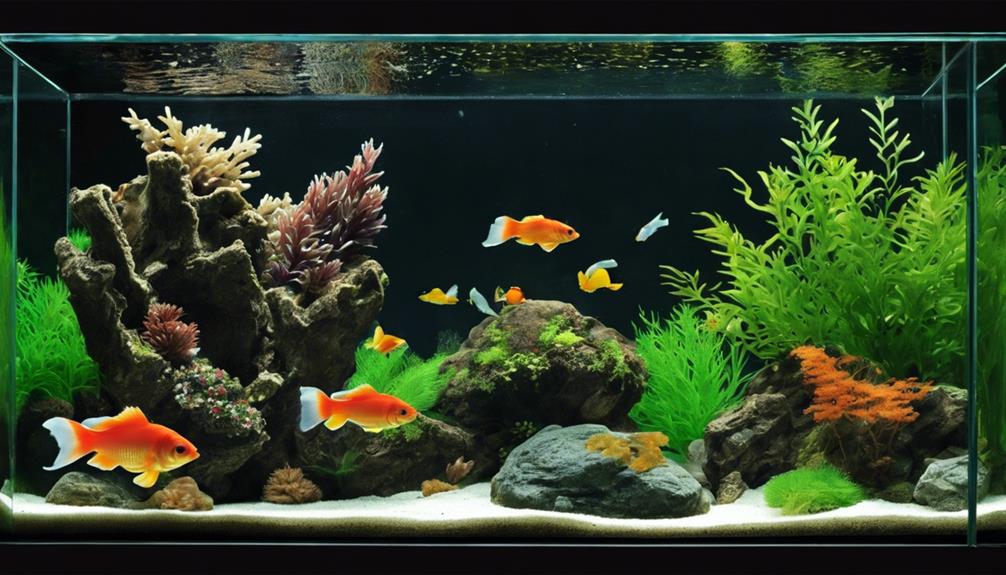
When my fish stays in one spot, it might be due to water quality issues. Testing pH and harmful substances like ammonia is crucial. Check temperature and oxygen levels too. Illness signs include lethargy and appetite loss – consult a vet if needed. Oxygenate water with an air pump and airstone. Guarantee hiding spots and proper lighting for comfort. Clean filters regularly for clean water. Seek a vet's advice for diagnosis and treatment. A stress-free environment promotes fish health. Maintaining good water quality is key. Addressing these factors can help your fish thrive better.
Key Takeaways
- Check water parameters for issues causing stress.
- Ensure proper oxygen levels with air pumps or airstones.
- Create a stress-free environment with hiding spots.
- Monitor fish behavior closely for any changes.
- Seek guidance from a veterinarian for expert advice.
Assess Water Quality
Evaluating water quality is vital for maintaining healthy and thriving fish in your tank.
To make sure your fish are happy and active, it's essential to regularly test the pH levels, as well as monitor the levels of harmful substances like ammonia, nitrite, and nitrate. Fluctuations in these parameters can lead to stress in fish, affecting their behavior and potentially causing lethargy.
Additionally, keep an eye on the water temperature and oxygen levels, as these factors play a significant role in your fish's overall well-being.
Check for Signs of Illness

When observing your fish, it's important to monitor closely for any signs of illness that may indicate underlying health issues.
- Look for signs of illness like lethargy, loss of appetite, abnormal swimming patterns, or visible parasites on the fish.
- Check for physical symptoms such as discoloration, fin damage, lesions, or unusual growths on the fish.
- Monitor water parameters closely to guarantee ideal conditions for the fish's health and well-being.
- Consider consulting a veterinarian or experienced fish keeper for guidance on diagnosing and treating potential illnesses.
- Quarantine the affected fish to prevent the spread of disease and provide targeted treatment if necessary.
To safeguard your fish's well-being, it's essential to be vigilant about any changes in behavior or appearance. By promptly identifying symptoms of illness and taking appropriate action, such as quarantining affected fish and seeking professional advice, you can effectively manage the health of your aquatic pets.
Regular monitoring and swift treatment play a crucial role in preventing disease spread and maintaining a thriving aquatic environment.
Ensure Proper Oxygen Levels

Alright, let's talk about ensuring proper oxygen levels for our fish friends. Monitoring the dissolved oxygen in their tank is super important because low levels can stress them out and make them sluggish.
To keep our underwater buddies happy and healthy, consider using aerators or oxygenating plants to boost the oxygen content in their environment.
Oxygenation for Fish
To maintain excellent health for fish in an aquarium, ensuring proper oxygen levels is paramount. Here are some innovative ways to oxygenate your fish tank effectively:
- Air Pump: Utilize an air pump to increase oxygen exchange in the water.
- Airstone: Attach an airstone to the air pump to create bubbles that enhance oxygenation.
- Surface Agitation: Promote oxygen absorption by creating surface agitation in the tank.
- Live Plants: Introduce live aquatic plants that release oxygen during photosynthesis.
- Test Kit: Regularly test oxygen levels using a reliable test kit to monitor and adjust as needed.
Monitoring Water Quality
Maintaining ideal oxygen levels in your aquarium is vital for ensuring the health and well-being of your fish. Monitoring dissolved oxygen levels is key to understanding the environment your fish are living in. Low oxygen levels can lead to stress, immobility, and even death in fish.
To address this, proper aeration using air pumps or oxygenating plants can help maintain oxygen levels. Factors like temperature, stocking density, and water circulation can affect oxygen levels, so regular water testing and adjustments are essential.
Provide Stress-Free Environment

To provide a stress-free environment for your fish, make sure the tank decorations offer plenty of hiding spots for them to feel secure. Keeping the water parameters stable, such as temperature and pH, is essential in creating a calming atmosphere for your aquatic pets.
Additionally, monitoring the tank lighting to avoid excessive brightness can help prevent stress in fish.
Ideal Tank Conditions
Creating a stress-free environment in a fish tank involves ensuring stable water conditions, providing hiding places, and maintaining proper lighting and filtration. To keep your fish happy and active, consider the following tips:
- Monitor Water Parameters: Regularly check and adjust temperature and pH levels.
- Offer Hiding Spots: Create nooks with plants or decorations for a sense of security.
- Optimize Lighting: Ensure there are light and dark periods for natural rhythms.
- Maintain Filtration: Clean filters regularly to keep water clean and oxygenated.
- Observe Behavior: Watch your fish for cues on their preferences and adjust accordingly.
Enrichment Activities
Adding enrichment activities to a fish tank can greatly enhance the well-being of the fish and encourage natural behaviors. To create a stimulating environment, consider incorporating a variety of elements such as tank decorations, live plants, and hiding spots. Rotating toys and rearranging tank features periodically can keep your fish engaged and prevent boredom. Providing different feeding locations and food types encourages movement and exploration. Interactive toys and puzzles offer mental stimulation and physical activity, reducing the chances of your fish staying in one spot. By offering a range of enriching activities, you can promote a stress-free environment that supports your fish's overall health and happiness.
| Enrichment Activities | Benefits |
|---|---|
| Tank Decorations | Promote exploration |
| Live Plants | Create natural setting |
| Hiding Spots | Reduce stress levels |
Health Check-Up Routine
To guarantee the well-being of our fish and maintain a stress-free environment, establishing a regular health check-up routine is paramount.
- Conduct regular water tests to ensure top-notch water quality for fish health.
- Provide adequate hiding spots and shelter to reduce stress and promote natural behavior.
- Maintain stable water parameters like temperature and pH to create a stress-free environment.
- Monitor fish behavior closely for any signs of distress or illness.
- Implement a consistent feeding schedule to support fish health and well-being.
Monitor Fish Closely

Keeping a close eye on the fish is vital to understanding the reasons behind their lack of movement. By monitoring fish behavior, signs of stress, illness, or environmental factors can be detected.
Observing water quality parameters like temperature, pH, and ammonia levels is essential in maintaining a healthy environment for your fish. Additionally, checking for physical injuries or abnormalities in the fish can provide insights into their immobility.
Regular fish tank observations are key to identifying any changes in behavior or appearance. If issues persist, seeking professional advice is recommended to address any underlying problems effectively.
Consult a Veterinarian

Consulting a veterinarian specializing in aquatic animals is essential when addressing fish that remain stationary in their tank. When seeking professional guidance for fish health and behavior, a veterinarian offers invaluable expertise in diagnosis and treatment options tailored to aquatic animals.
- Expert Diagnosis: Veterinarians can accurately diagnose underlying health issues contributing to the fish's abnormal behavior.
- Specialized Treatment Options: They can recommend specific treatment options designed to meet the unique needs of aquatic animals.
- Professional Guidance: Veterinarians provide essential guidance on the care and management of fish health concerns.
- Ensuring Well-being: Seeking veterinary assistance is vital for the well-being and recovery of fish exhibiting abnormal behavior.
- Comprehensive Care: Veterinarians offer holistic care to address not only the symptoms but also the root causes of fish health issues.
Maintain Good Water Quality Post-Treatment

When addressing fish that remain stationary in their tank, it's important to guarantee that good water quality is maintained post-treatment. Monitor water parameters closely to make sure they're at levels best for fish health. Conduct regular water tests to track any changes that could affect the recovering fish.
Keep a close eye on fish behavior and appearance for any signs of relapse or new health issues. Providing a stress-free environment with ideal water conditions supports the fish's recovery process. Consulting with a fish veterinarian or expert for guidance on maintaining good water quality and post-treatment care is essential.
Frequently Asked Questions
Why Is My Fish Only Staying in One Spot?
Staying in one spot, fish may signal stress, water changes, or territorial behavior. Factors like lighting, water flow, and vibrations impact their behavior. Conduct head counts, check water quality, and eliminate stressors. Experiment with pump placement and water flow adjustments for improvement.
What to Do if Your Fish Don't Get Along?
If my fish don't get along, I introduce new hiding spots and territories to reduce aggression. I monitor behavior for stress signs like fin nipping. Separating aggressive fish or providing dividers prevents fighting. Each fish needs space to establish territory.
How Do You Save a Struggling Fish?
To save a struggling fish, closely monitor for distress, check water quality, isolate if needed, provide a stress-free environment, and seek advice from experts. By taking proactive steps, you can improve the fish's health and well-being.
How Do You Help a Stressed Fish?
To help a stressed fish, I monitor water parameters, provide hiding spots, maintain stability in the tank, feed consistently, and consider peaceful tank mates. These strategies create a secure environment and promote well-being in my fish.
Conclusion
To sum up, dealing with your fish remaining in one spot involves:
- Evaluating water quality
- Inspecting for signs of illness
- Guaranteeing proper oxygen levels
- Offering a stress-free environment
- Keeping a close eye on your fish
- Seeking advice from a veterinarian
- Upholding good water quality post-treatment
By following these steps, you can help your fish stay healthy and content in their tank.
Remember, a content fish is a healthy fish!
Dana is our Lead Content Writer, bringing a wealth of knowledge and expertise to our team. With a background deeply rooted in animal studies and a profound love for all creatures, Dana is dedicated to crafting engaging and informative content that resonates with our audience. With Dana at the helm, you can trust that our content is accurate and engaging, catering to the diverse interests of animal enthusiasts everywhere.
Animals
Animals With Big Foreheads
Only in the animal kingdom, creatures with big foreheads reveal fascinating insights into intelligence, social dynamics, and survival strategies, captivating readers with their intriguing adaptations.
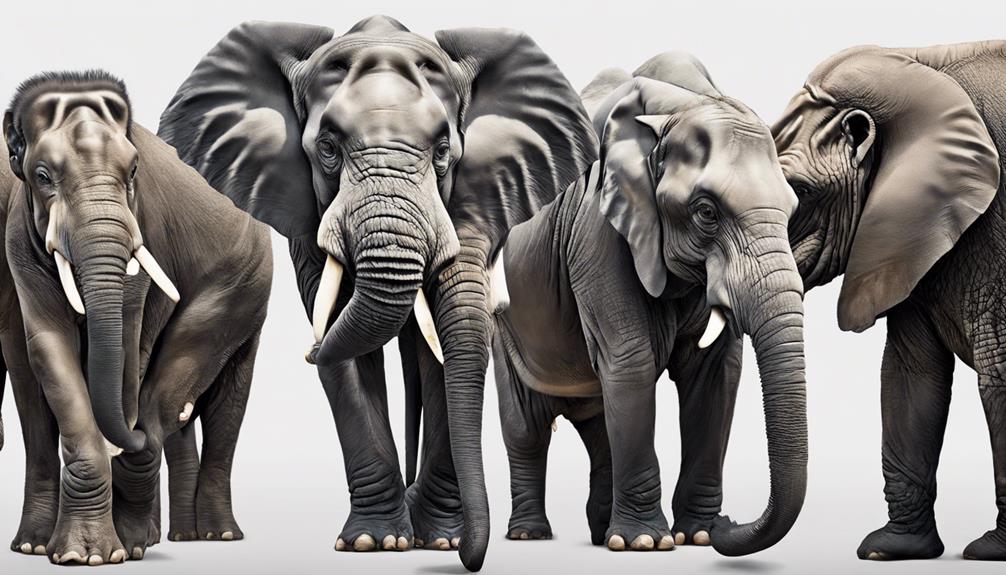
In the animal kingdom, creatures with significant foreheads, like primates, demonstrate advanced cognitive abilities and social skills. These foreheads often signify intelligence, social status, or dominance within their groups. Additionally, large foreheads help animals find food easily by enhancing their senses and storing fat for scarcity times. The forehead size can also impact communication, mating rituals, and survival skills, making them essential for thriving in their habitats. Moreover, unique markings on these foreheads aid in individual recognition and mate selection. Animals with prominent foreheads have intriguing evolutionary adaptations that are worth exploring further.
Key Takeaways
- Big foreheads in animals like baboons and dolphins indicate advanced cognitive abilities.
- Primates use their large foreheads to solve complex problems and navigate social hierarchies.
- Elephants possess big foreheads that aid in social signaling and communication within their groups.
- Rhinoceroses have prominent foreheads that serve as protective shields against predators and during combat.
- Whales exhibit big foreheads which play a role in echolocation and communication underwater.
Evolutionary Significance of Big Foreheads
Big foreheads in animals have evolved to facilitate advanced cognitive abilities and social dynamics. Animals with prominent foreheads, such as primates, might think and process information differently due to their increased brain capacity. This evolutionary adaptation allows them to solve complex problems, communicate effectively, and navigate intricate social hierarchies within their groups. The size of big foreheads in certain species can indicate intelligence, social status, or dominance, showcasing the importance of this physical feature in the animal kingdom.
Moreover, species with big foreheads may have unique adaptations that contribute to their survival in diverse environments. For example, the development of larger brain sizes in correlation with big foreheads could have provided these animals with the cognitive tools necessary to thrive in challenging habitats. Understanding the evolutionary significance of big foreheads sheds light on the remarkable ways in which animals have adapted to enhance their cognitive abilities and social interactions for survival and success in their ecosystems.
Adaptations for Food Foraging
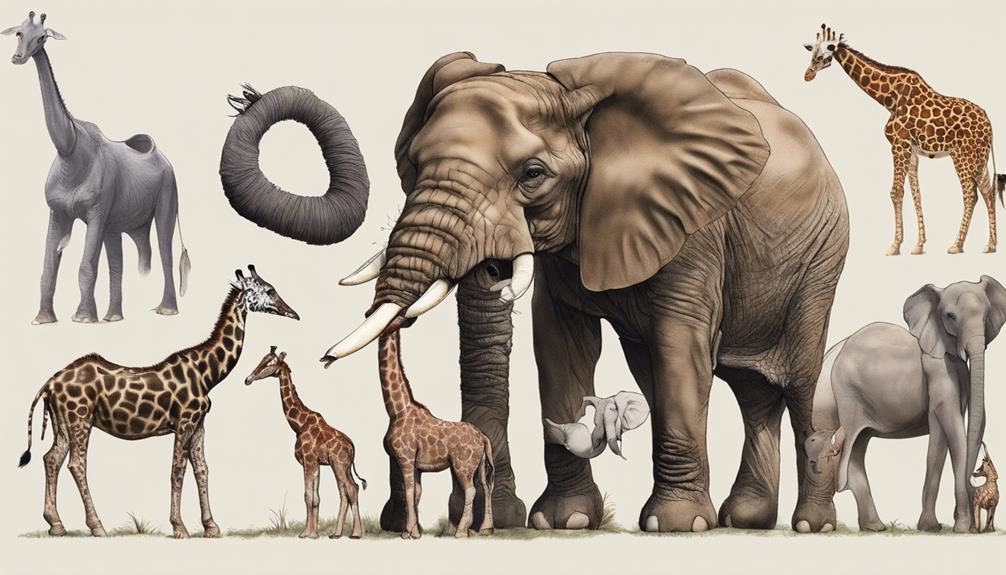
Specialized adaptations for food foraging are commonly observed in animals with prominent foreheads, enhancing their ability to locate and procure sustenance in their environments. These adaptations serve various purposes, such as improving sensory perception to detect prey or food sources from afar. Additionally, some species utilize their enlarged foreheads to store fat reserves, aiding them during times of scarcity while foraging for food.
The size and shape of prominent foreheads play an important role in helping these animals access hard-to-reach food sources within their habitats. This structural advantage allows them to reach nourishment that may be otherwise inaccessible. Prominent foreheads can also facilitate efficient chewing and food processing, optimizing digestion in certain species. These adaptations showcase the evolutionary significance of prominent foreheads in the context of food foraging strategies, demonstrating how these physical characteristics contribute to the survival and success of these animals in their natural environments.
Social Interactions and Communication
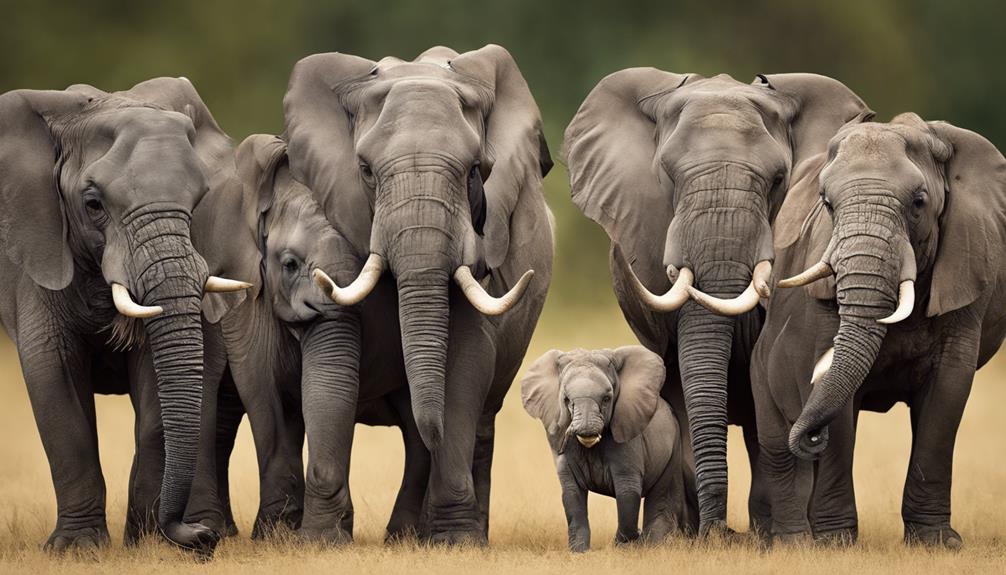
In the domain of animal behavior, the size and shape of prominent foreheads play a crucial role in facilitating social interactions and communication within their species. Animals with big foreheads often use this feature for social signaling, indicating dominance or submission during interactions. Displaying forehead colors or patterns can be a form of communication, signaling aggression or mating readiness. In some species, headbutting with foreheads is a common social behavior, while forehead rubbing or touching serves as a gesture of bonding and affiliation. To better understand the significance of big foreheads in social interactions and communication among animals, consider the following table:
| Social Interaction | Communication |
|---|---|
| Dominance display | Signaling aggression |
| Submission cues | Mating readiness signals |
| Bonding gestures | Affiliation indicators |
Environmental Adaptations and Survival

A noteworthy factor in the survival of animals with prominent foreheads is the specialized adaptations they possess for thriving in their environments. Large foreheads can serve as protective shields, offering defense against head-on collisions or potential predator attacks.
Moreover, the size of their foreheads can impact various aspects of their lives, such as communication, mating rituals, and social hierarchies within their groups. These animals have evolved over time due to environmental pressures, leading to the development of big foreheads in certain species.
Significantly, a substantial forehead size in animals may signify advanced brain development, correlating with enhanced cognitive abilities for problem-solving and adaptation to their surroundings. By understanding how these specialized adaptations contribute to their survival, we gain insight into the remarkable ways in which animals with big foreheads have evolved to thrive in their respective habitats.
Unique Physiology and Behavioral Traits
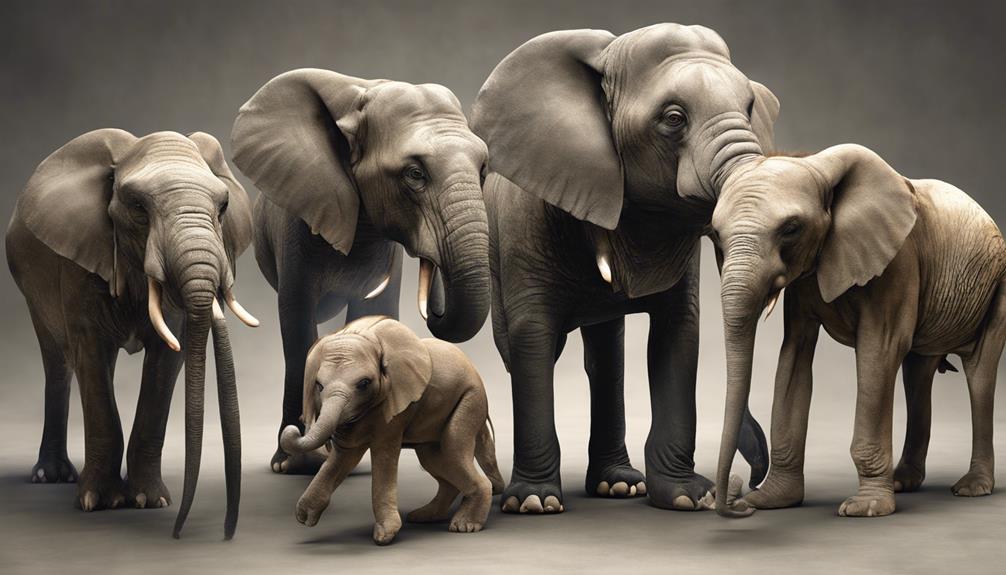
Evolutionary pressures have shaped the unique physiology and behavioral traits of animals with big foreheads, revealing intriguing insights into their cognitive abilities and social dynamics. Creatures with prominent foreheads often showcase advanced cognitive skills, such as problem-solving and learning capabilities. In certain species, a high forehead can signify social hierarchy and dominance within their groups, influencing interactions and group dynamics.
Distinct forehead markings or patterns in these animals serve as essential tools for individual recognition and communication, aiding in their social interactions and cooperative behaviors. Furthermore, the size of their foreheads may play a pivotal role in mate selection and reproductive success, highlighting the significance of this physical feature in their breeding strategies.
The adaptations seen in animals with large foreheads are a confirmation to their specialized ecological roles and behavioral strategies, showcasing the intricate ways in which evolution has shaped these fascinating creatures.
Frequently Asked Questions
What Animal Has a Long Forehead?
I'll talk about an animal with a long forehead. Baboons have distinct long foreheads used for social interactions and displaying dominance. These foreheads vary in size and shape depending on factors like age and sex.
Which Aquatic Animal Has Big Forehead?
I'll plunge into the aquatic world to unveil which creature boasts a sizable forehead. The Beluga whale, with its distinctive white form and impressive echolocation skills, showcases a prominent and bulging forehead that sets it apart in the ocean.
Conclusion
To summarize, animals with big foreheads have evolved unique adaptations for survival, such as enhanced social interactions and improved food foraging abilities.
Their large foreheads serve as a key feature in their physiology, allowing them to thrive in their environments like a beacon guiding sailors through stormy seas.
These animals showcase the diversity and complexity of nature, demonstrating the incredible ways in which different species have adapted to thrive in their ecosystems.
Dana is our Lead Content Writer, bringing a wealth of knowledge and expertise to our team. With a background deeply rooted in animal studies and a profound love for all creatures, Dana is dedicated to crafting engaging and informative content that resonates with our audience. With Dana at the helm, you can trust that our content is accurate and engaging, catering to the diverse interests of animal enthusiasts everywhere.
-

 Vetted1 month ago
Vetted1 month ago15 Best Cat Foods for Managing Hyperthyroidism – Vet Approved and Feline Friendly
-

 Cats7 months ago
Cats7 months agoTop 5 Cat Breeders in Arkansas: A Guide
-

 Animal Facts1 month ago
Animal Facts1 month agoSpring Animals: A Guide to Seasonal Wildlife
-

 Vetted1 month ago
Vetted1 month ago15 Best Fresh Dog Food Delivery Services for Your Pup's Health and Happiness
-

 Rabbits1 month ago
Rabbits1 month agoExploring Rabbit Holes: What Do They Look Like?
-
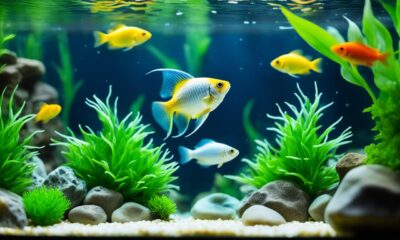
 Fish1 month ago
Fish1 month agoKeeping Your Sucker Fish Thriving at Home
-

 Pets2 months ago
Pets2 months agoLatest Pet Statistics in US – Trends & Insights in 2024
-

 Dogs1 month ago
Dogs1 month agoPomsky Buying Guide: Need Know Buying Pomeranian Husky Cost


















